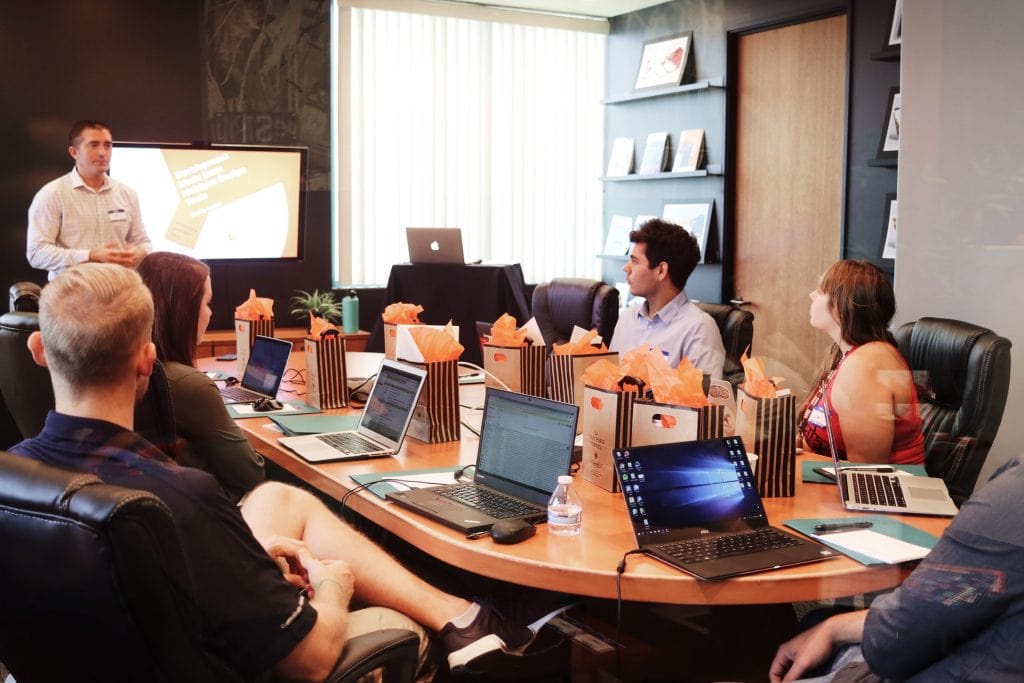As a CEO or business leader, you have to make sure that your company has the right talent in place—and the right culture. Recruitment is critical for business growth. Getting it wrong can lead to low team member engagement and toxic company culture. But recruitment doesn’t have to be complicated.
When I was Managing Director of three fast-growing tech firms, I faced many recruitment challenges. One thing I learned was that you need to follow a systematic and obsessive approach. That’s the way to crack it.
Based on my experience, here’s my ultimate guide to building a solid and repeatable recruitment process. I’ll share with you the best practices for recruiting top talent into your organisation.
1. Create a clear job scorecard
I’ve written before about the importance of regular talent assessments. Nothing is more crucial to the success of your business than having talented individuals that you can rely on in your team. This is where the job scorecard comes in.
I often use this template with clients for every role in their organisation. By going through the grid, you’ll be able to work out the most critical tasks for that role, how much time is needed to perform them well and how regularly they need to be done. Once that’s clear, work out the KPI that relates to each task.
But how will a scorecard help improve your recruiting process? Well, having clarity on what’s expected of a particular job role will help you see what an A-Player looks like in your organisation. The job scorecard will be a tool to measure and benchmark all future performance discussions, and you can use it during your interview process.
It’s fundamental to work out what you need them to do in that role a year from now, so you know they were a success. Then, you can create a job description that focuses explicitly on these things.
2. Build a powerful and attractive company culture

I don’t say this enough! Creating a great work environment is paramount to attract and retain the best talent. Having a great company culture makes a big difference in your employees’ performance. It provides a sense of belonging, purpose, inspiration and pride in what they do every day. A great culture will attract great people.
If you’re trying to build a high-performing team, their success will come from a culture of a shared mission and values. You want your current employees to be as passionate about your mission as you are so that they can instil this passion into your new hires.
When you make a hiring decision, you need to do so with a mindset of cultural fit. Will that candidate fit in with your organisation, co-workers and supervisor?
3. Use the Topgrading methodology
The Topgrading methodology improves hiring by using a practice that encourages total honesty in candidates, an extensive chronological career interview, and reference checks with former managers arranged by the candidate for verification purposes.
Topgrading requires knowing a candidate’s entire career history, and this isn’t something you can do in an hour or an hour and a half. You go through every job they’ve ever had, what they did, why they took the job, their accountabilities and responsibilities, their performance, their successes and accomplishments and their mistakes or failures.
In a conversation with the world’s foremost hiring expert and founder of Topgrading Inc, Dr Brad Smart, on The Melting Pot, he revealed the Topgrading methodology’s secret. By giving the candidates the task of arranging the reference calls, you will see the low performers drop out as they will not get their bosses to talk. This will save you time and money. It will be the A-Players that will love this approach.
4. Monitor social media

When job seekers are considering applying for a new job, what do you think will be the first thing they’ll do? They’ll check your company online. If you want to appeal to them, you need to make sure that your online presence is attractive. It needs to reflect how great your company culture and work environment is. And for that, social media is vital.
Curating your online presence is an excellent tactic for attracting talent to your company, as it can show them what you’re about before they even apply. Do you know how you are perceived as an employer? Take a look at your company’s profile on Glassdoor and all the reviews from your former and existing employees. What’s the CEO approval rating? Ideally, it should be 85% or above.
And what about your team’s social media profiles? Have your management and leadership teams update and polish up their LinkedIn profiles. This includes professionally taken photographs and well-written summaries showcasing who they are and how they manage their teams.
Here’s an opportunity to encourage your existing employees to leave positive, honest and authentic reviews about working in your company.
5. Build brand reputation and show off
If you build an excellent reputation for your company, you’ll attract top talent. A great example of this is La Fosse Associates. This London based recruiting company has been recognised as the best recruitment firm to work at in the Top 100 Best Company awards since 2013 (and they’ve done it again in 2021). This doesn’t happen by accident. It’s a result of consistently excellent work at building a great workplace. And the result? Their reputation is a magnet for talented people that keep sending CVs.
Following La Fosse Associates’ formula, it’s a good idea to enter awards like ‘Best Company’ or ‘Great Place To Work’. A simple nomination is something that you can brag about. Getting involved in outreach projects will also make you more attractive to potential candidates.
Here’s an opportunity to encourage your existing employees to leave positive, honest and authentic reviews about working in your company. You can also post ‘behind the scenes’ pictures of your company on social media and have clients rate your business. Sell candidates your company and show off what a great place to work you are.
6. Offer learning and development opportunities

According to Gallup analytics, the opportunity to learn and grow is the number one consideration that millennials value in a job.
Having a learning mindset drives individual growth and development. You need to encourage this in all your teams. Some people don’t have that innate curiosity and are content with what they already know. It’s crucial that you actively recruit for it.
A great strategy is to recruit for curiosity. This is what we did when I was MD at Peer1. To every job candidate, I asked them to come and talk to me for 10 minutes and answer the following: “Why cloud, why Peer1, and why should we hire you?” Some would simply repeat the information they’d found on our website. Others went a bit further and did more in-depth research. But you know what the best candidates did? They called our staff to ask them why they liked working for us. That’s the curiosity I’m talking about. And it speaks volumes about their mindset.
7. Start asking the right questions
In a recent conversation on The Melting Pot, hiring expert, Lou Adler put it simply: if you want to make long-term hiring decisions, you need to approach hiring differently. The main goal of his firm, Performance-based Hiring is to hire outstanding people for the long term, or at least for what he calls “the anniversary date”. This is a year after they were hired. When that moment comes, you want to have the hiring manager saying, “I’m so glad I hired that person’” and the employee saying, “I’m so glad I took this job.”
To achieve that, you need to stop making long-term decisions based on short-term data. Hiring for the start date, new title, compensation or location won’t tell you anything about the candidate’s success or their job performance.
For that reason, there are only two important questions you need to ask during the interview process:
- What have you done that’s most similar to this problem?
- If you were to get this job, how would you solve this problem?
Here you’re not looking for the candidate to give you the answer to the problem, but for them to give you the steps to solve it. According to Lou, “it’s the process of thinking through problems, solutions, and the ability to implement those kinds of solutions that you’ll see reflected in their answers.” This will help you determine if they can carry out the tasks.
This article originally appeared here.
